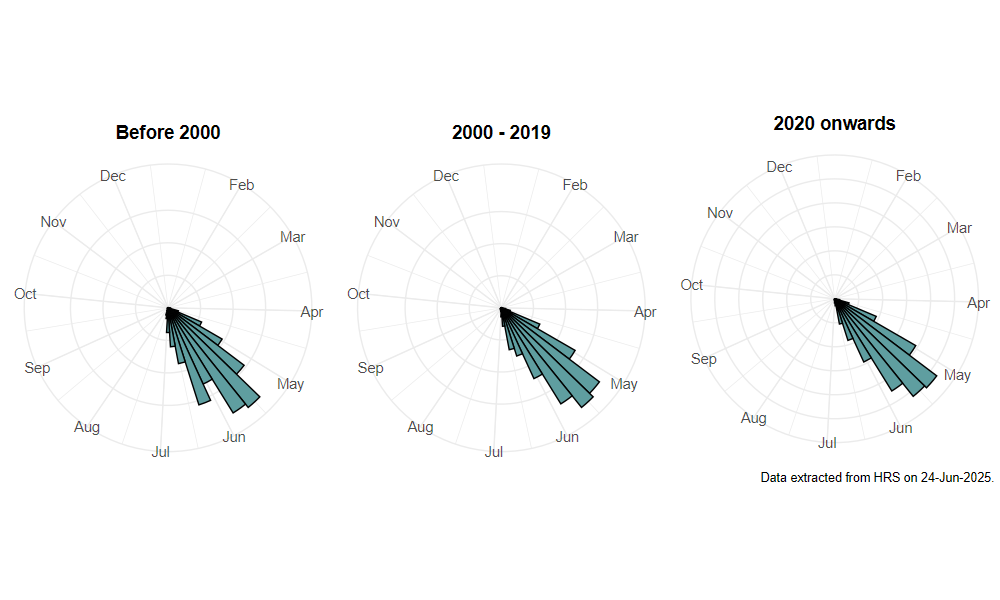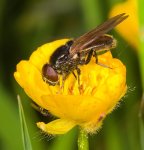Cheilosia albitarsis (Meigen, 1822)
Identification
Identification difficulty = 3. ![]()
![]() according to Ball & Morris, 20241
according to Ball & Morris, 20241
Synonymy
This species and C. ranunculi were separated by Doczkal (2000)2. Any records prior to this date can only be accepted if supported by a voucher specimen.
Biology
The larvae have been found in the rootstocks of large Ranunculus repens plants in late summer. Adults can be found in damp meadows, marshy places and grassy woodland rides, where they are most frequently seen at flowers of buttercups Ranunculus repens and R. bulbosus (rarely R. acris), but other white and yellow flowers are also visited. According to Speight (2017)3 this is an 'anthropogenic species, favoured by present-day farming practices.'
Flight period
The following plots show the number of unique records per week excluding those reported to be of immature stages.

Distribution
This is a widely distributed species that can be expected to occur in the majority of lowland damp habitats that support Ranunculus repens. The distribution map reflects the limitations of data submitted prior to 2000. Current evidence suggest that C. albitarsis is more widely distributed and abundant in the north and extends further into Scotland than C. ranunculi of which few specimens have been found amongst Scottish material peviously identified as C. albitarsis(Rotheray & Wilkinson, 2010)4

Trends
The following plots show the Frescalo TFactor vs year and a map of the rescaled frequency (all records) for the species.
-
Ball, S., & Morris, R. (2024). Hoverflies of Britain and Ireland. WILDGuides (3rd ed.). Oxford: Princeton University Press. ↩
-
Doczkal, D. (2000). Description of Cheilosia ranunculi spec. nov. from Europe, a sibling species of C. albitarsis Meigen (Diptera, Syrphidae). Volucella, 5, 63–78. ↩
-
Speight, M. (2017). Species accounts of European Syrphidae ( No. 97). yrph the Net, the database of European Syrphidae (Diptera) (p. 294). Dublin: Syrph the Net publications. Retrieved from https://pollinators.ie/wordpress/wp-content/uploads/2018/05/StN-2017-Species-Accounts.pdf ↩
-
Rotheray, G., & Wilkinson, G. (2010). Cheilosia ranunculi Doczkal and Sphaerophoria bankowskae Goeldlin de Tiefenau (Diptera, Syrphidae) new to Scotland. Dipterists Digest (Second Series), 17, 19–22. ↩
